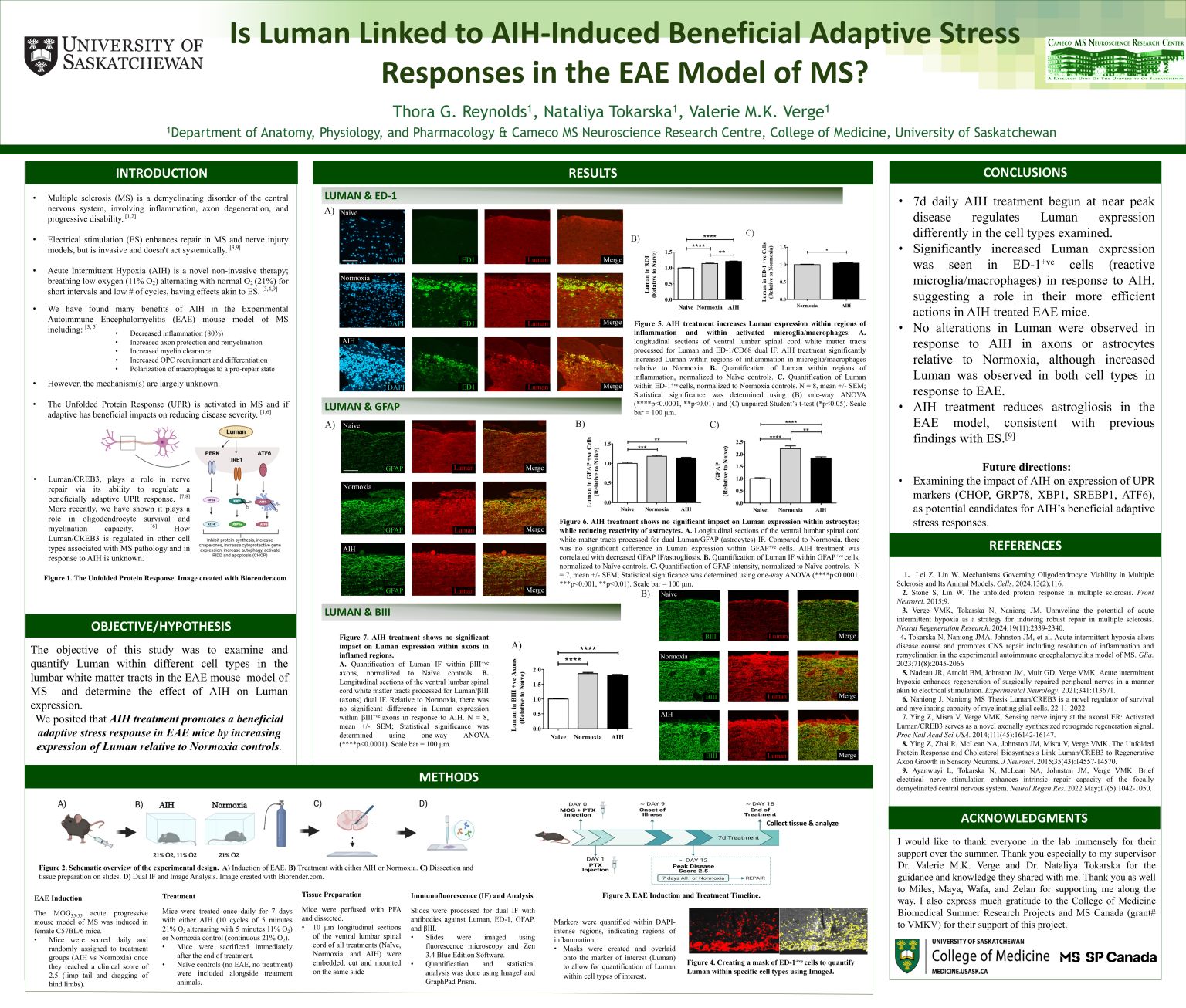
Is Luman Linked to AIH-Induced Beneficial Adaptive Stress Responses in the EAE Model of MS?
Thora Reynolds
We find that Acute Intermittent Hypoxia (AIH), a novel non-invasive therapy, reduces disease severity and promotes repair in the EAE mouse model of MS. However, the mechanism(s) are largely unknown. The Unfolded Protein Response (UPR), triggered by ER stress, is activated in MS and the EAE model, and if adaptive, can promote a beneficial stress response. Luman/CREB3, a major UPR regulator in nerve repair, has also been shown by the Verge lab to play a role in oligodendrocyte survival and myelination capacity. Thus, we hypothesized that “AIH treatment may promote a beneficial adaptive stress response by increasing expression of Luman relative to Normoxia controls”. Using the EAE model, mice were given either AIH or Normoxia treatment once daily for 7d after reaching near peak disease. Luman expression was examined within the ventral lumbar spinal cord white matter tracts at end of treatment using immunofluorescence analysis. We observed that AIH increased Luman expression within regions of inflammation and in reactive
microglia/macrophages. However, although significantly increased over the Naïve state, no change was observed in axons or astrocytes relative to Normoxia. This suggests a potential role for Luman and the UPR in the beneficial outcomes of AIH, which will guide future experiments.
